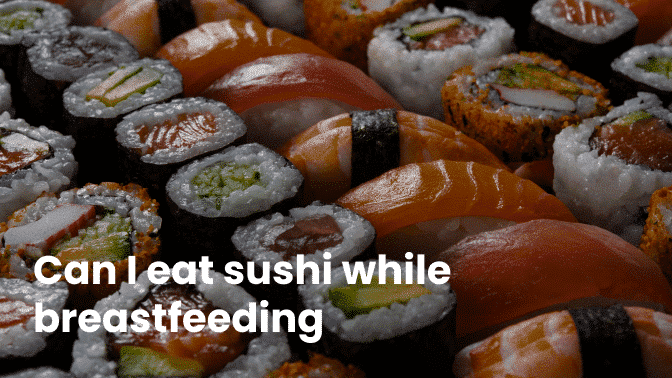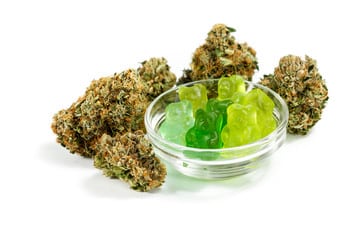Sushi is a delicious and popular dish that originated in Japan and has gained popularity all over the world. However, if you are a breastfeeding mother, you may be wondering if it is safe to eat sushi while breastfeeding. In this article, we will explore this question and provide you with the information you need to make an informed decision.
Sushi is a type of Japanese cuisine that typically consists of vinegared rice, raw or cooked seafood, and vegetables, all rolled into a seaweed wrapper.
While sushi can be a healthy and nutritious food, it is also important to note that raw or undercooked fish can contain harmful bacteria and parasites that can cause foodborne illnesses.
As a breastfeeding mother, it is important to be mindful of what you eat, as some foods can be passed through breast milk and affect your baby’s health.
However, there is no need to avoid sushi altogether while breastfeeding. The key is to take certain precautions to ensure that the sushi you eat is safe for you and your baby.
- Precautions to Take When Eating Raw Sushi
- Sources and Preparation of Raw Sushi
- Being Cautious and Taking Preventive Measures
- Other Tips for Eating Sushi While Breastfeeding
- 1. Limiting the intake of high-mercury fish
- 2. Consulting with healthcare providers for concerns and questions
- 3. Overall food safety practices for breastfeeding mothers
- Conclusion
Here are some things to keep in mind when eating sushi while breastfeeding:
- Choose cooked sushi: Cooked sushi is a safe option for breastfeeding mothers, as it eliminates the risk of consuming raw or undercooked fish. Some popular cooked sushi options include tempura shrimp, eel, or crab.
- Stick to reputable restaurants: When dining out, make sure to choose a reputable restaurant that follows food safety protocols. This can help ensure that the sushi you are eating is fresh and free from harmful bacteria.
- Avoid high-mercury fish: Certain types of fish, such as tuna, can contain high levels of mercury. It is recommended that breastfeeding mothers limit their intake of high-mercury fish to no more than two servings per week. Some types of sushi, such as tuna and swordfish, should be avoided or limited when breastfeeding.
- Be cautious of raw sushi: If you choose to eat raw sushi while breastfeeding, make sure it is from a reputable source and has been properly prepared. Raw sushi can contain harmful bacteria and parasites that can cause foodborne illnesses, so it is important to be cautious.
Precautions to Take When Eating Raw Sushi
Read Aslo: Keriorrhea | Symptoms, Causes, Treatments, and Prevention
Raw sushi is a delicious delicacy that is enjoyed by many around the world. However, raw or undercooked fish can contain harmful bacteria and parasites that can cause foodborne illnesses. This risk is particularly concerning for breastfeeding mothers, as they need to be mindful of what they eat and the potential impact on their baby’s health. In this section, we will discuss some precautions that breastfeeding mothers can take when eating raw sushi.
Sources and Preparation of Raw Sushi
When it comes to eating raw sushi, it is important to choose your sources carefully. Look for reputable sushi restaurants that follow food safety protocols, such as properly storing and handling fish, and regularly cleaning their utensils and work surfaces.
You can also consider purchasing sushi from a trusted seafood supplier and preparing it at home. However, make sure to follow safe food handling practices, such as keeping the fish refrigerated at all times and consuming it within a day of purchase.
When eating raw sushi, it is important to ensure that the fish has been properly prepared. The fish should be fresh and free from any off-putting smells or discolouration. Additionally, the sushi should be prepared with clean and sanitized utensils and work surfaces.
It is recommended to avoid any sushi that has been sitting out for extended periods or has not been stored at the correct temperature.
Being Cautious and Taking Preventive Measures
Even when eating raw sushi from reputable sources, it is still important to take preventive measures to minimize the risk of foodborne illnesses. Here are some tips to consider:
- Limit the amount of raw sushi: While raw sushi can be enjoyed in moderation, it is best to limit your consumption to reduce the risk of exposure to harmful bacteria and parasites.
- Consider getting vaccinated: If you are concerned about the risk of contracting a foodborne illness, you may consider getting vaccinated against certain types of bacteria, such as Hepatitis A.
- Pay attention to any symptoms: If you experience any symptoms of foodborne illness, such as nausea, vomiting, diarrhea, or fever, contact your healthcare provider immediately.
- Be cautious of certain types of fish: Some types of fish, such as tuna and swordfish, are more likely to contain high levels of mercury. It is recommended to limit your intake of these fish to reduce the risk of mercury exposure.
Raw sushi can be a delicious and safe option when eaten from reputable sources and prepared properly. However, as a breastfeeding mother, it is important to be mindful of the potential risks and take preventive measures to minimize any potential harm to your baby.
By following these precautions, you can continue to enjoy the delicious flavours of raw sushi while keeping your baby’s health and safety in mind.
Other Tips for Eating Sushi While Breastfeeding
While it is generally safe to eat sushi while breastfeeding, there are some additional tips that can help ensure the safety of both you and your baby. In this section, we will discuss some other tips for eating sushi while breastfeeding.
1. Limiting the intake of high-mercury fish
Certain types of fish, such as shark, swordfish, king mackerel, and tilefish, are known to contain high levels of mercury. Mercury is a neurotoxin that can affect the development of the nervous system in fetuses and infants.
While it is generally safe for breastfeeding mothers to consume low-mercury fish, it is recommended to limit your intake of high-mercury fish to reduce the risk of mercury exposure to your baby. Instead, choose fish with lower levels of mercury, such as salmon, shrimp, and tilapia.
2. Consulting with healthcare providers for concerns and questions
If you have any concerns or questions about eating sushi while breastfeeding, it is recommended to consult with your healthcare provider. They can provide personalized advice and guidance based on your individual circumstances. They can also help you make informed decisions about what foods to eat and what foods to avoid while breastfeeding.
3. Overall food safety practices for breastfeeding mothers
In addition to being mindful of what types of fish to eat, there are some general food safety practices that all breastfeeding mothers should follow. These include:
- Washing your hands frequently with soap and water before handling food
- Keeping all utensils and work surfaces clean and sanitized
- Cooking all meats and poultry to the appropriate temperature
- Refrigerating leftovers promptly and consuming them within a few days
- Avoiding unpasteurized dairy products and juices
- Avoiding foods that have been sitting out at room temperature for an extended period.
Conclusion
sushi can be a safe and healthy option for breastfeeding mothers as long as certain precautions are taken.
By choosing cooked sushi, sticking to reputable restaurants, avoiding high-mercury fish, and being cautious of raw sushi, you can enjoy this delicious dish while breastfeeding without putting your baby’s health at risk.
As always, it is important to consult with your healthcare provider if you have any concerns or questions about your diet while breastfeeding.
My name is Wisdom Bassey, I’m a blog content writer and graphic designer who provides support and services for brands and different companies. I’m young and versatile, A tech enthusiast. I carry out deep research on every topic I choose to write about. You can reach me through my social media handles, I’m always available and ready to connect.
The content is intended to augment, not replace, information provided by your clinician. It is not intended nor implied to be a substitute for professional medical advice. Reading this information does not create or replace a doctor-patient relationship or consultation. If required, please contact your doctor or other health care provider to assist you to interpret any of this information, or in applying the information to your individual needs.




